Remember that black-and-white striped peppermint bullseye from your childhood? Meet the family that makes every '80s kid's favourite candy
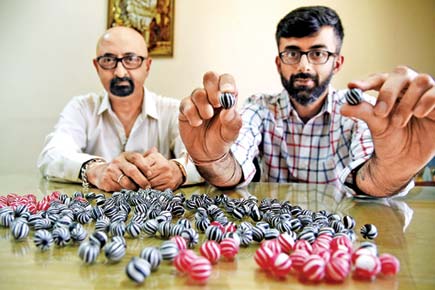
Madan Talreja and Karan say they roam with bullseye packets in their car because they never know when a fan could meet them pics/Sameer Markande
The unmistakable aroma of raspberry marked our entry into the rust-red steel gate marked 'Talreja Products'. Once in, nothing apart from the smile-inducing whiff about the two-storied factory in Turbhe provides any clues about the hardboiled sweets that enjoy a nostalgic cult following, and are made here. Remember the round, black-and-white striped bullseye sweet (see box) we've all grown up soiling our tongues charcoal with?
ADVERTISEMENT
Gopilal Talreja is the man to thank for introducing Mumbai to it in the 1950s.
And before we could conjure up images of peppermint waterfalls, Gopilal's son Madan, who now helms the business, sets it straight. "The original factory that dad inherited was located in Dadar. It was smaller but we enjoyed the monopoly on mint balls."
He is, of course, referring to the fact that everyone from Ulhasnagar to Ambarnath, via Thane now makes 'me too' bullseyes with little care for process, quality and hygiene. "By the 1980s, the market was flooded with substandard imitations made by poached, ex-employees," says the 56-year-old. Today, of the four sweets Gopilal started with, two continue to be in production. One of these is the bullseye.
Since then, the half-a-century-old brand has moved base twice; first to Andheri in the 1970s and to its current location in 2007.
With the latter, Madan also upgraded old-school cooking methods and went mechanised. Since the 1980s, together with son Karan, they have added six new flavours —orange, strawberry, raspberry, pineapple, ginger and raw mango — to their candy repertoire that retails in Goa, Bangalore, Chennai, Coimbatore, Mussoorie and Dehradun apart from Mumbai.
Karan takes us on a tour of the factory floor. It's not long before we are introduced to toffee tables, sugar kneaders, cutting machines and a few cold rooms where toffee and hardboiled candies are sheathed in plastic wrappers.
"I have one rule. If I won't eat it, I won't sell it," says Karan, 32, casually dipping gloved fingers into a fresh batch of still-hot creamy milk toffee, tearing off a long twine and handing us a piece. The trick is to have it hot, we learn by looking at Karan devour his toffee string. He lets us in on a childhood secret. Madan then made sugar coated almonds. Karan would lick off the coating and store the almonds in the basin which his mother was once horrified to walk in on.
Sorting and sealing is carried out by Karan's latest mechanical acquisition. On a fully functional day, with no shortage of water, electricity and a minimum of 45 workers in attendance, the Talreja factory can spill out four tonnes of toffee and hard boiled sweets.

Back in the office, the conversation steers towards Mumbai's third pillar of edible culture. "I'm not sure what inspired dad to make the bullseye but he committed to the extent of trademarking Talreja tin packaging," reminisces Madan when Karan cuts him. "I even found one of our vintage, scantily clad lady-bearing tins on Amazon recently only to learn that my grandmother had sold off the remaining one last Diwali."
"Back in school, my sisters and I were known for the sweets but even today, I get regular requests from friends for a bag of these," says Karan, who has taken to storing packets in his car to hand out to unannounced loyalists. If you happen to spot Karan or his dad handing out bags of sweets to street kids at signals, be sure to shout out, "Thanks for the bullseye!"
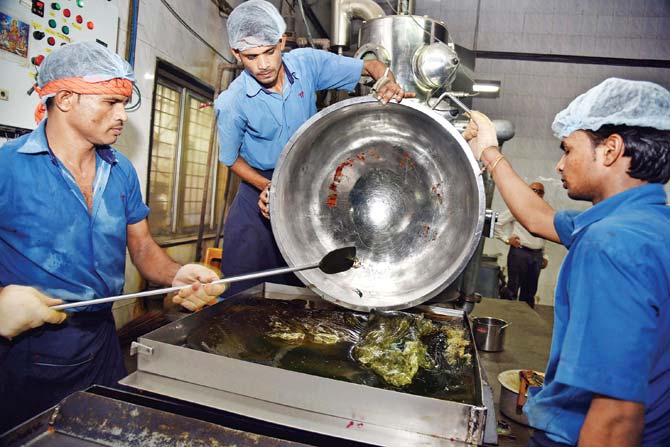
1. Cooked sugar, water and liquid glucose is poured into cooling plates
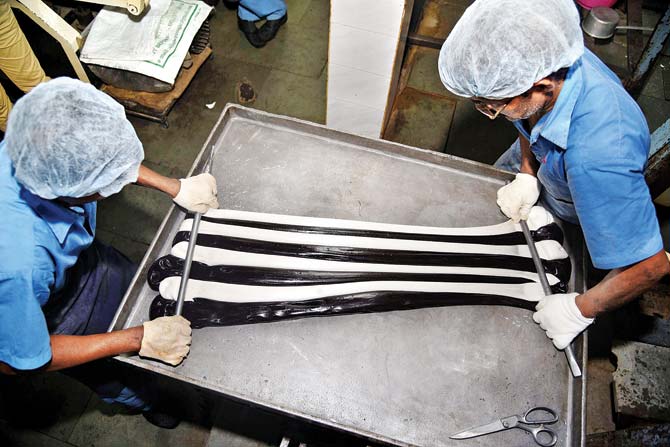
2. The lava candy is kneaded and divided into white and black ropes that are pulled and twisted till the candy cools down
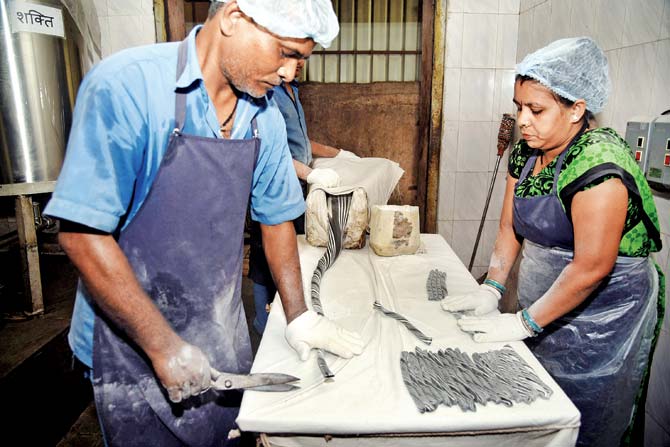
3. The coloured and white ropes are twisted, and portioned.
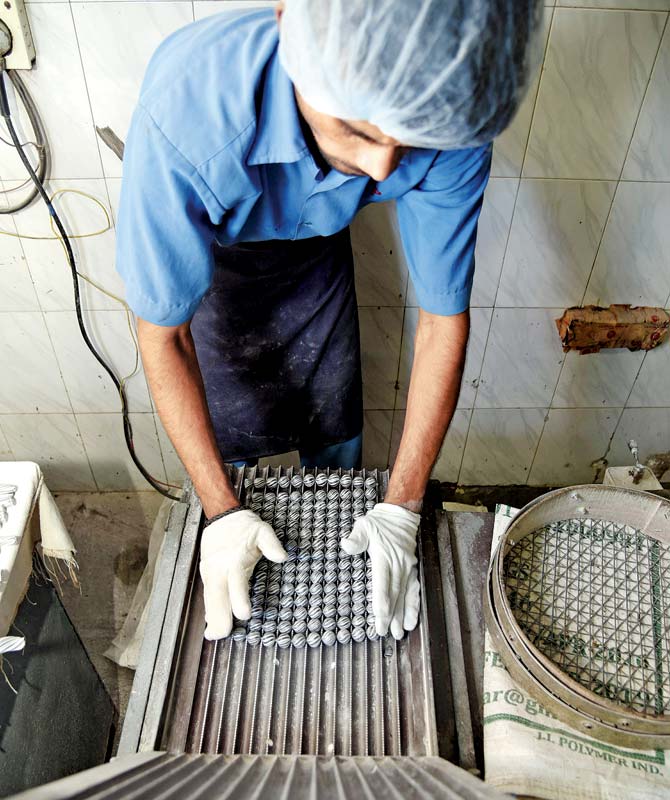
4. A candy forming machine creates roundels
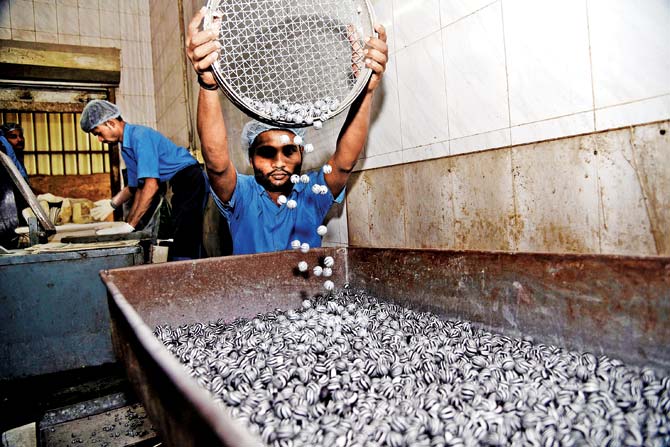
5. The candy is then cooled and packaged
 Subscribe today by clicking the link and stay updated with the latest news!" Click here!
Subscribe today by clicking the link and stay updated with the latest news!" Click here!






